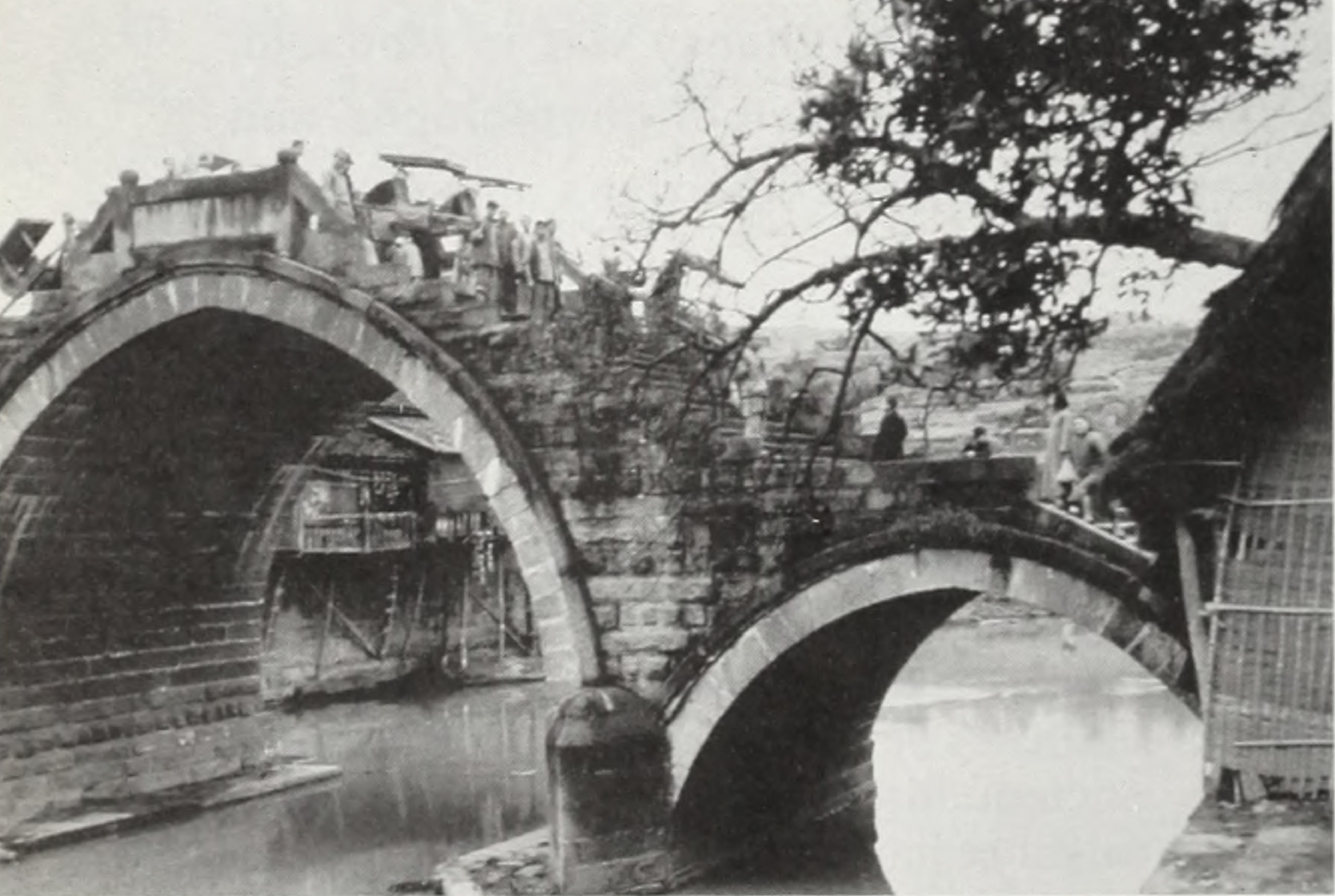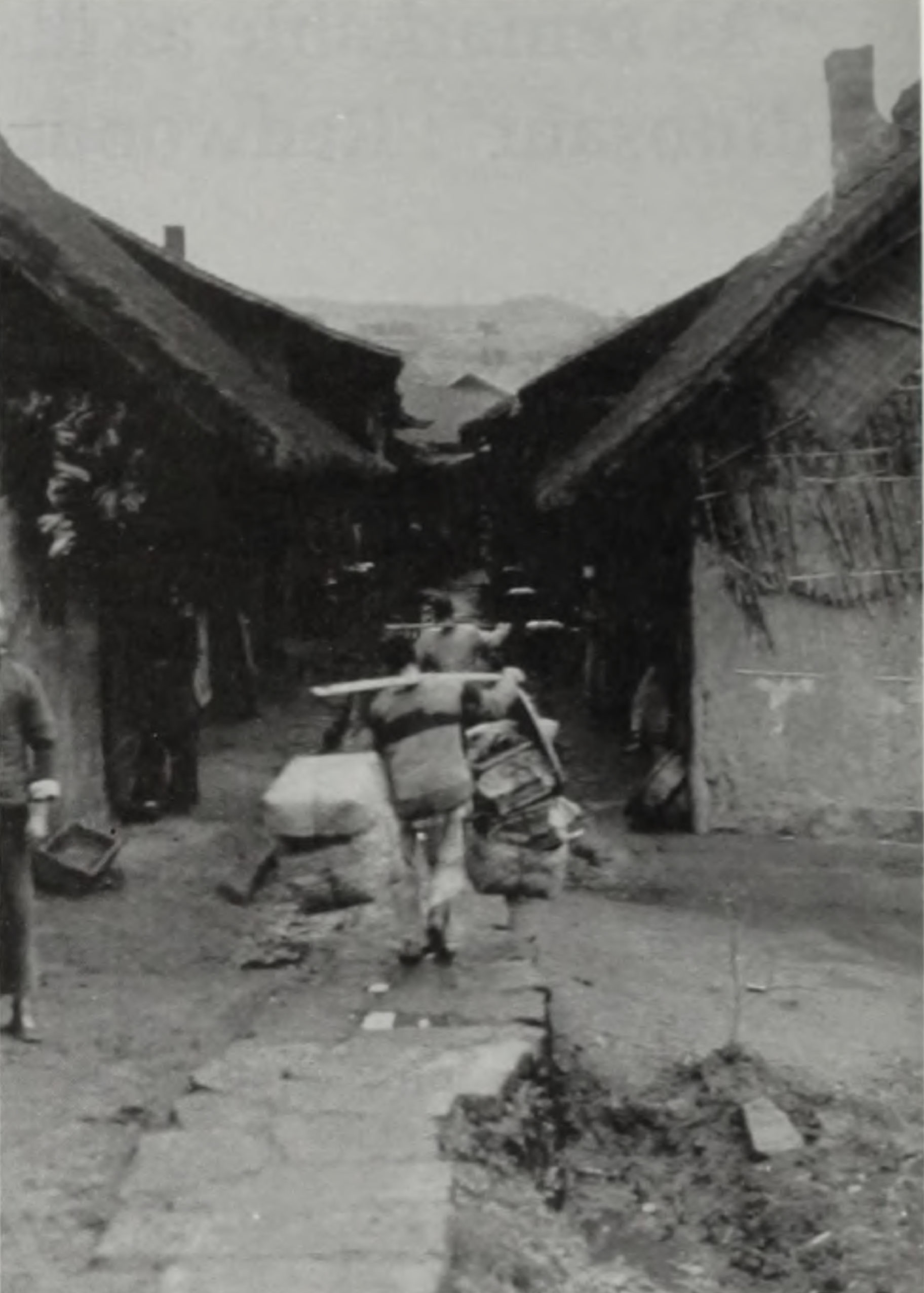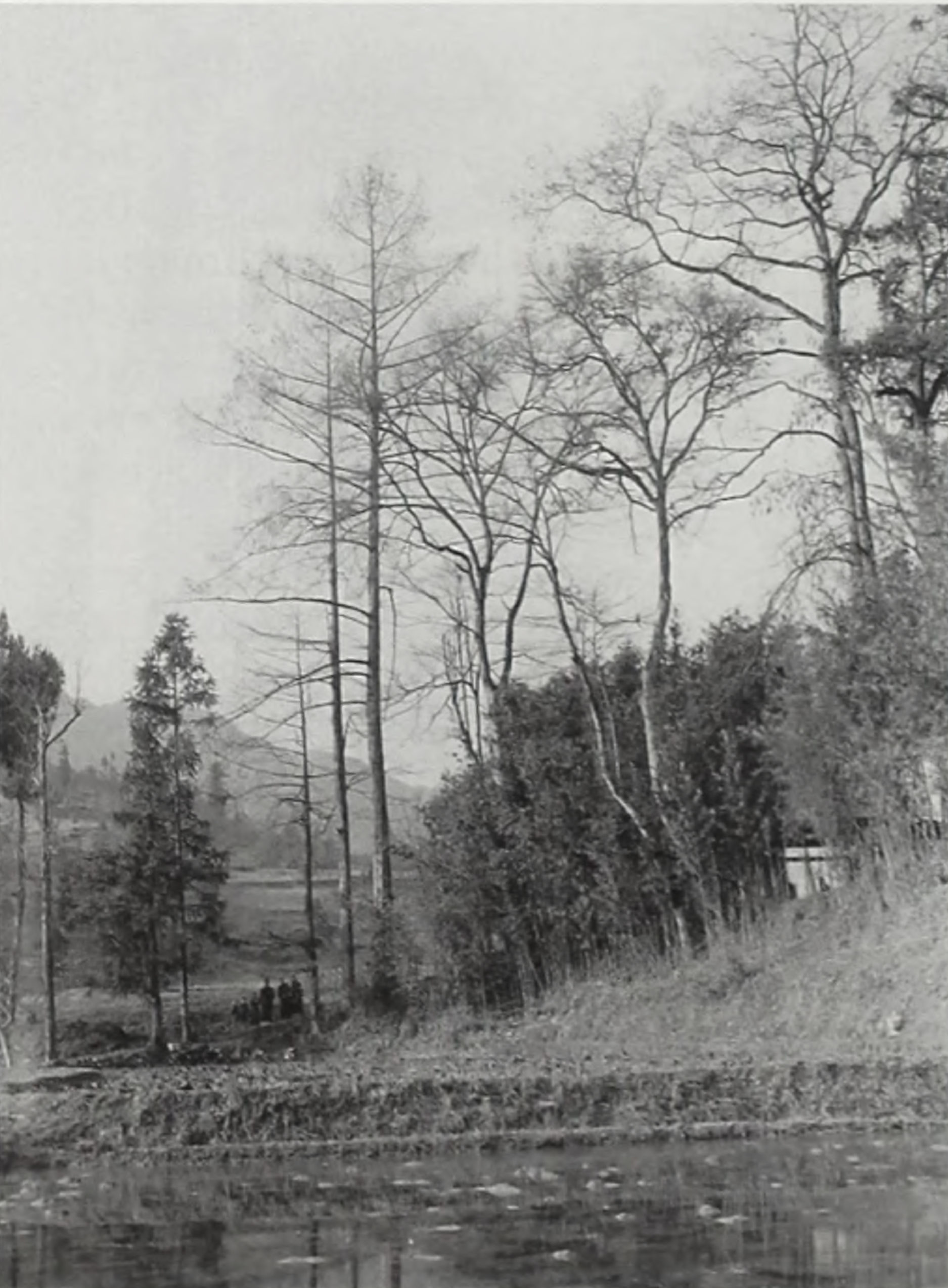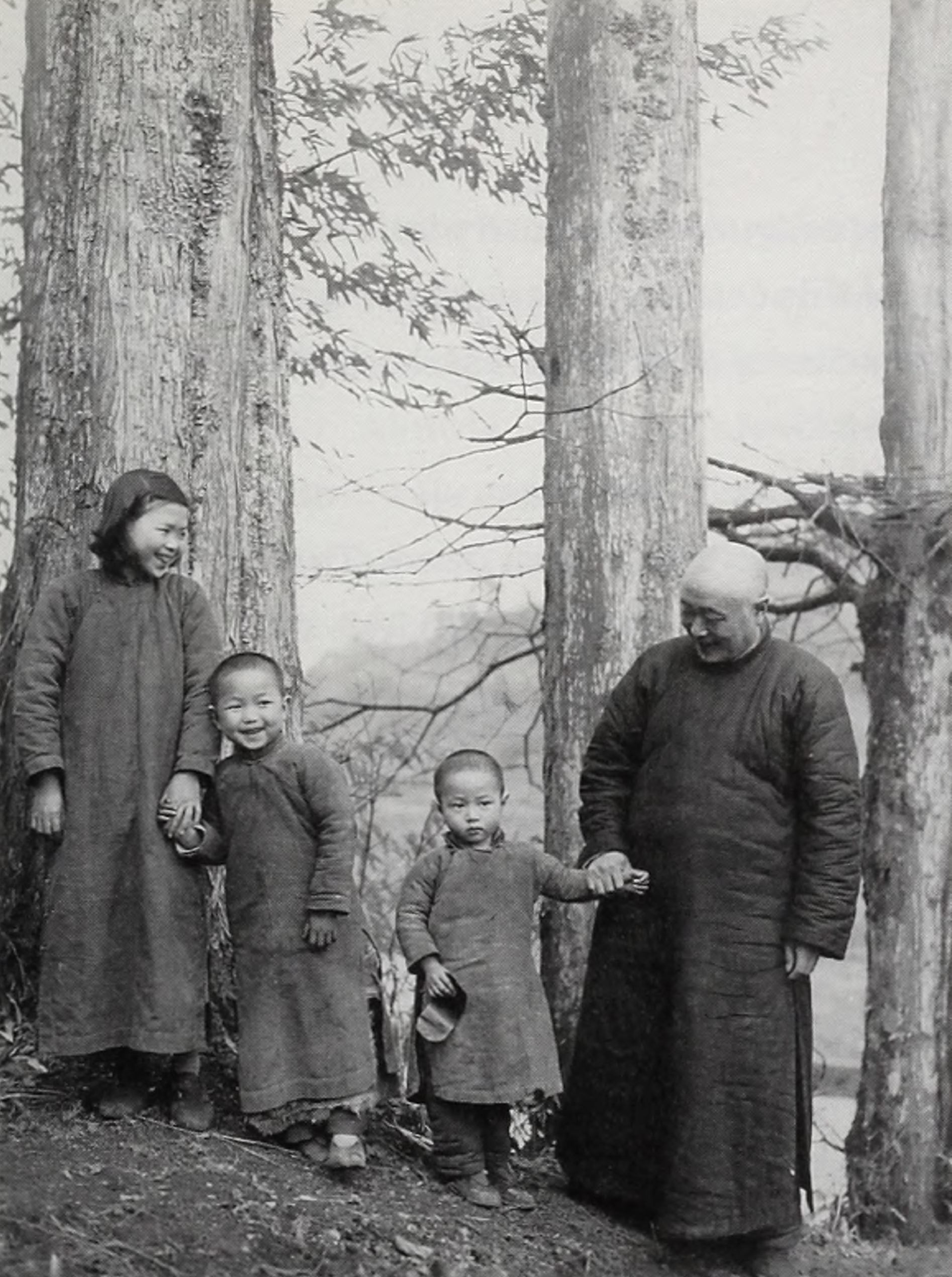By 1948, Ralph Chaney-professor of paleontology at the University of California, Berkeley, and passionate advocate for the North American redwoods-had been hearing for a year and a half from his colleague Professor H. H. Hu about the discovery in China of trees that had been thought extinct for millions of years. Chaney wrote that when he received seeds of Metasequoia from China, “the reality of this new tree so impressed me that I decided to visit it in its native home. I wanted to see how it lived and with what other trees it was associated.” That was on January 9, 1948; less than two months later, Chaney was in Modaoqi, marveling at the newly found tree, shooting roll after roll of photographs, and absorbing information on the climate and topography of the tree’s native region and on the plants that grew around it.*
The details of the trip have been told elsewhere—how Dr. Milton Silverman, Science Writer for the San Francisco Chronicle, and I flew across the Pacific and up the Yangtze valley to Chungking how we took a river boat down to Wan-Hsien and then walked over the steep and slippery trails for three days to Mo-tao-chi and for two days more to Shui-sapa [the so-called Metasequoia Valley]. In March, at the time of our visit, the trees were bare of leaves, having shed them last November. Hanging from their branches were long catkins bearing the male cones, and the shorter female cones were also developing on the trees. We collected some of these cones for later study in America, but our immediate interest was in the environment of these close relatives of the California Redwoods and in the other trees that were growing with them.
The idea was gradually developing in my mind that it was fossils not of Sequoia but of Metasequoia that I had collected in Manchuria in 1925, at the end of a season with the Central Asiatic Expedition in Mongolia. If that were the case, perhaps other fossil redwoods I had found in many other parts of the world were likewise related to the newly discovered trees of central China. The key to our understanding of the ancient forests of the northern hemisphere might be found not only in the living Coast Redwood (Sequoia sempervirens) of California but in the groves of Dawn Redwoods (Metasequoia glyptostroboides) in Szechuan. If so, it was important to learn as much as we could about the climate and topography of the region in which these “living fossils” had survived and to determine whether the trees now associated with them were the same sorts of trees as those living with them in the forests of the remote past….
Summarizing the evidence of Metasequoia distribution, we find that it appeared at high latitudes in the Cretaceous period, was widely distributed there in the Eocene, had moved south and was abundant in the United States and northern China in the Oligocene, was more scattered in distribution during the Miocene, and disappeared from the fossil record on both sides of the Pacific before or during the Pliocene period. Why has it survived only in central China after living so widely around the world in earlier ages?



This brings us back to the valley at Shui-sa-pa, where Dawn Redwoods are living under what appear to be natural conditions. When I was there last March, all of the hardwoods as well as the Dawn Redwoods were without leaves, but I was able to recognize most of the common trees. Birch (Betula), chestnut (Castanea), oak (Quercus), sweet gum (Liquidambar), beech (Fagus), and katsura (Cercidiphyllum) were among those living in immediate association, all typical members of the Arcto-Tertiary Flora [an assemblage of trees that originated in the Arctic during the Tertiary]. Their presence here with Metasequoia makes these groves more similar to the ancient forests of North America and Eurasia than any I have ever seen. So it is important to learn as much as we can about environmental conditions in these valleys of central China. It will tell us what Manchuria and Oregon looked like 40 million years ago and will restore for us the terrain in Greenland and Alaska as far back as 100 million years ago. Observations on the existing climate in the area now occupied by Dawn Redwoods will enable us to make some long-range weather predictions in reverse regarding the rains and winds of Manchuria and Oregon in the days when Metasequoia lived there and left behind its leaves and cones to be preserved as fossils.
Our stay last March was too short to permit other than preliminary studies. Furthermore, there are no climatic records from any region nearer than Chungking, which is lower in altitude by about 3000 feet. However, we learned enough about the climate at Shui-sa-pa, at an altitude of about 4000 feet, to make some suggestions. Winters are cool and rainy, with temperatures rarely falling below freezing but with conditions not well suited to plant growth. Rainfall is abundant, much of it falling in the summer. The climatic regime of summer rainfall and of unfavorable winters is now to be found widely in north temperate regions, where trees bear their leaves during the summer and shed them in the winter. The deciduous habit of the Dawn Redwood and of its hardwood associates seems to have been developed in past ages in regions with summer-wet and winter-cool climate. Why, then, is the Dawn Redwood no longer widely distributed as it was in the past?



No final answer can be given until further studies are made by Chinese botanists…. I can now make only a few suggestions to help explain the wide differences between its past and present distribution. There is probably no other place in the world outside of the tropics where a mild, uniform climate is combined with a summer rainy season. In the southern United States we do have wet summers in the region occupied by a close relative of Metasequoia, the swamp cypress (Taxodium distichum), but the winters are cold, with temperatures regularly falling below freezing. In California we have mild winters in the region occupied by another close relative of Metasequoia, the Coast Redwood (Sequoia sempervirens), but the summers are dry. The same may be said of all parts of temperate Asia I have visited; mild winters characterize regions with dry summers, while in places where the summers are wet, the winters are cold. If it were not for the ranges of mountains that surround Mo-tao-chi and Shui-sa-pa, the winds from North China would come down during the winter and make these valleys too cold for the Dawn Redwood. And the hot summer winds from the north and wet would make them too dry. These mountains were built during the Pliocene epoch, when Metasequoia was disappearing from other parts of the world. They have preserved in this limited area the climate on which the existence of the Dawn Redwood depends. If for any reason the climate here were to change, they would probably become extinct in these valleys, as they have in all other known parts of the world.



The climates congenial to Metasequoia have proven far less narrow in range than Chaney and others feared. His greatest hope was to preserve the species in its native area, preferably by instituting a national park, and the trees have indeed come to be protected by the government; not even small trees can be cut down.
Chaney himself brought back seeds and four seedlings from China. Concerned that his prizes might be taken from him at customs in Hawaii, he tucked the seeds and twigs into an inner pocket and requested intercession for the seedlings from a former student at the Department of Agriculture in Washington. Word did not reach the inspector at Plant and Economic Quarantine in Honolulu, however, and he demanded that the four seedlings be handed over for incineration. Chaney’s protestations that the trees were priceless, more than a million years old, were of no avail. According to Milton Silverman, the ensuing argument grew louder and louder until Chaney, close to hysteria, was shouting defiantly and citing “millions of years, tens of millions of years, a hundred million years. ” Suddenly the agitated inspector asked a question, “Are they more than a hundred and fifty years old!” And so, officially declared antiques, the seedlings continued their journey to California.
Excerpted from “Redwoods in China,” Natural History Magazine (December 1948) 47: 440-444
* Milton Silverman, The Search for the Dawn Redwoods, 1990.
Other articles on Metasequoia by Ralph W. Chaney
Citation: Chaney, R. W. 1998. “As remarkable as discovering a living dinosaur”: Redwoods in China. Arnoldia, 58(4): 23–27.
- The bearing of the living Metasequoia on problems of Tertiary paleobotany. Proceedings of the National Academy, U S A 34: 503-515
- Redwoods around the Pacific basin. Pacific Discovery 1(5): 4-14
- A revision of fossil Sequoia and Taxodium in western North America based on the recent discovery of Metasequoia. Transactions of the American Philosophical Society. New Series 40(3): 171-263, plates 1-12.
An account of Chaney’s trip to China by his traveling companion, Milton Silverman
- Search for the Dawn Redwoods. San Francisco, CA. The author.
